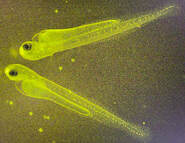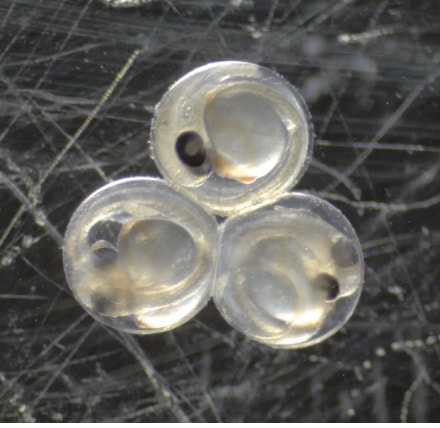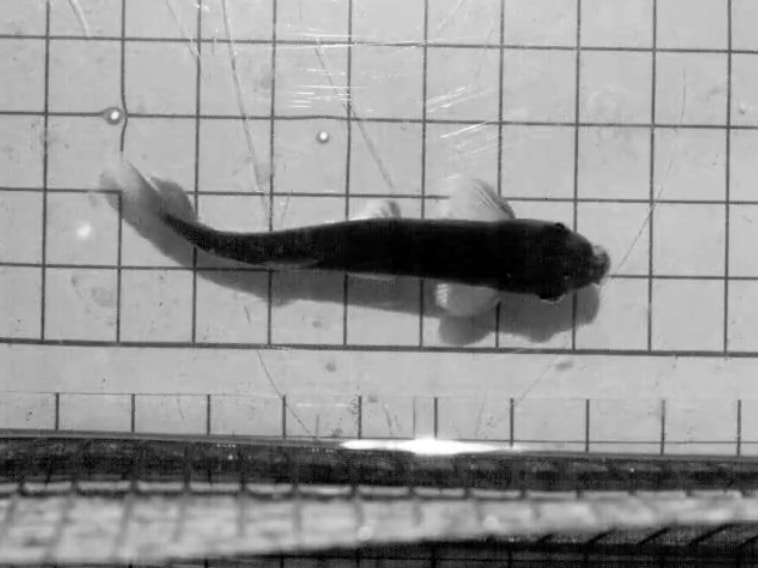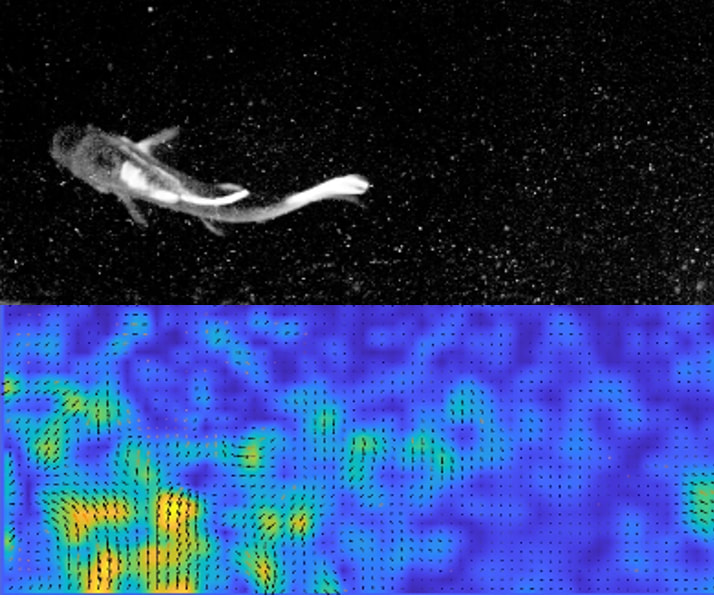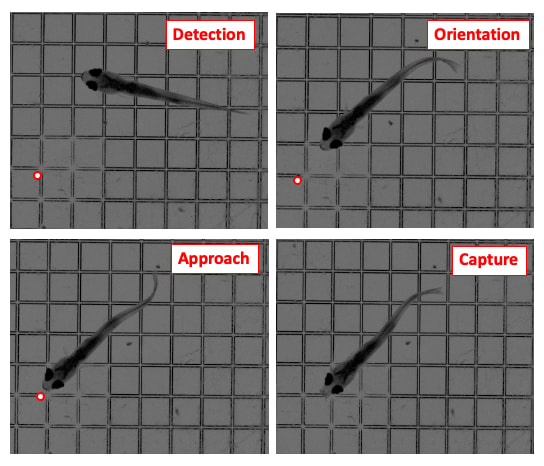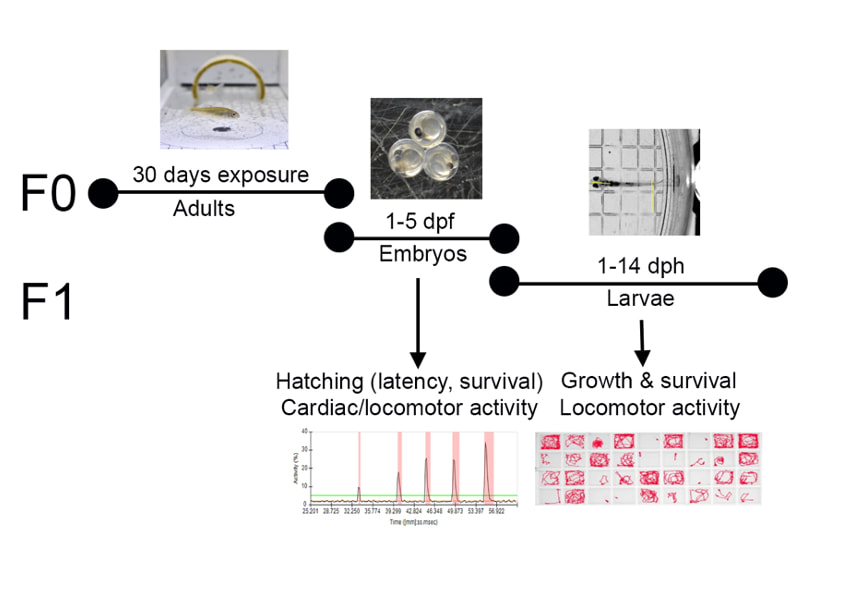Research
|
|
Social Information Use and Learning in Aquatic Embryos
This line of research seeks to answer a fundamental and little-understood question in ecology, evolution, and behavior—how do embryos gain information about the environment? In oviparous, aquatic species such as fish and frogs, the embryonic stage is a critical window of development and embryos are highly sensitive to environmental cues in a variety of modalities. During the egg stage, individuals may obtain information about the environment directly (via asocial learning mechanisms) or by observing the behavior of conspecifics (social learning mechanisms) or a combination of the two. However, few studies have explicitly tested hypotheses related to learning in aquatic embryos, and thus numerous questions remain about the development and mechanisms of learning at this key stage of ontogeny. We are testing multiple, non-mutually exclusive hypotheses of social learning and information transfer among egg-bound embryos to determine when learned behaviors are first expressed, and how and from whom do embryos learn. In addition, we are also investigating the sensory mechanisms that embryos use to perceive and transmit information among neighbors in the nest. Communication Ecology of the Lateral Line System We know little about how animals perceive, assess, and integrate multiple ‘bits’ of social information received by different sensory systems, or how they use that information to make behavioral decisions. Two competing groups of hypotheses have been proposed; the first states that animals should detect, process, and respond to stimuli independently. The second proposes that receivers may integrate multisensory signal components into a single percept, potentially with emergent properties that alter signal meaning and thereby receiver response. Fish provide a unique opportunity to test hypotheses related to multimodal communication and receiver psychology because social interactions in most species are mediated by visually complex, dance-like displays. These displays involve ritualized movements of the body and fins, which displace the surrounding water. The density of the aquatic medium means that, in addition to seeing other members of their species, fishes have an opportunity to feel other members of their species—without ever touching them—through the particle motion of water. This ‘touch-at-a-distance’ is detected by the mechanosensory lateral line system, a specialized sensory system of flow-responsive receptors distributed over the body surface. We are using a combination of high-speed imaging and flow-visualization techniques (particle image velocimetry) and behavioral assays to measure intra- and interspecific variation in signaler-generated flow fields during conspecific social interactions and evaluate the extent to which specific features of animal-generated flow fields (e.g., velocity, vorticity) reflect aspects of signaler identity, motivation, and condition. Following this characterization, we will test several nonmutually exclusive hypotheses about the evolution and significance of animal-generated hydrodynamic signals and multimodal receiver perception. Anthropogenic Effects on Animal Behavior Historically, another line of research in the lab has focused on understanding how different forms of human activity (e.g., chemical contaminants, land-use changes, invasive introductions) modify the behavior of organisms, and the associated ecological and evolutionary implications of these changes. Previous projects in the lab have included assessments of effects of harmful algal blooms (HABs) on predator-prey dynamics, and the combined effects of microplastics and other stressors (endocrine-disrupting compounds, temperature changes due to climate change) on the reproductive behavior fishes. Current projects in this area are focusing on (i) testing the impacts of climate change on adaptive developmental plasticity and associated fitness consequences after hatching (i.e., behavioral carry-over effects of embryonic learning) and (ii) the transgenerational and multigenerational effects of microplastics and other envionmental stressors on the behavior of fish in important fitness contexts. |
